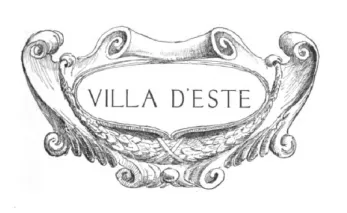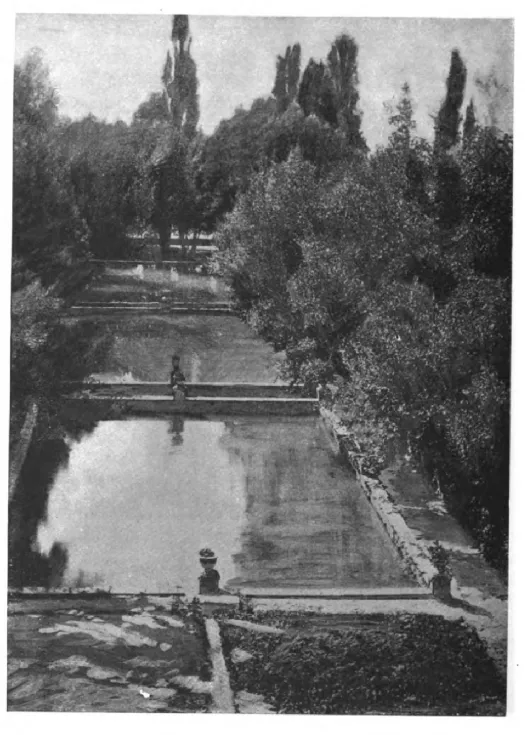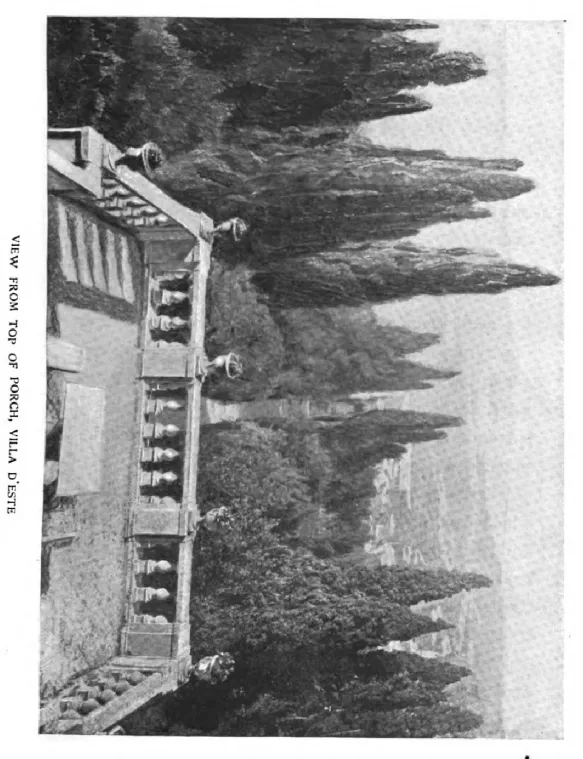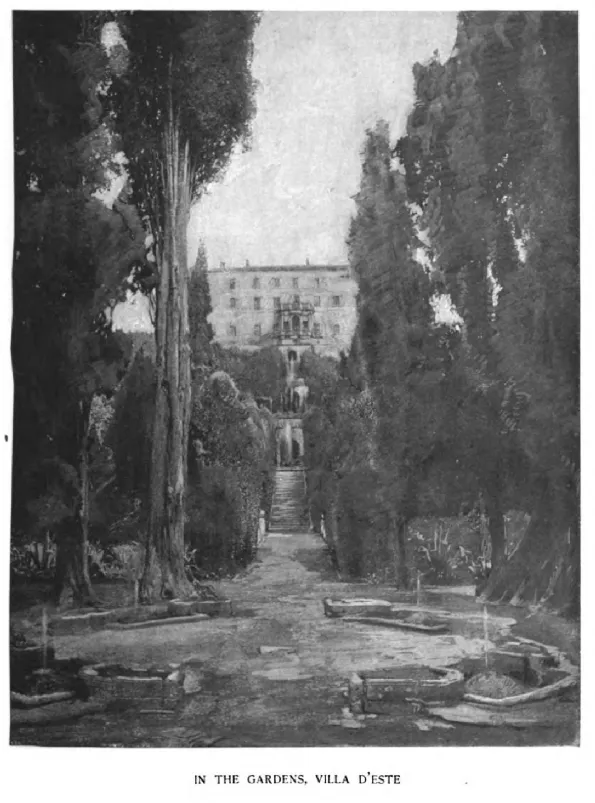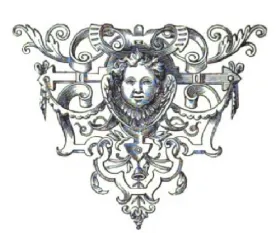![]()
VILLA D’ESTE
![]()
IN turning from the gardens of Rome and its immediate environs, the Villa d’Este, at Tivoli, is the most important, and, in fact, if one could study but a single villa in Italy, this should be the chosen one.
In its day it was undoubtedly the finest villa in Italy, and although it is now in a state of great dilapidation and decay, its natural advantages and the great beauty of its situation are such, and the construction of its main features so admirable, that it still remains a noble example of landscape architecture of the Renaissance. Not nearly so large as the Borghese or the Pamfili Villa, every inch of its ground has been utilized to the utmost, and the whole arrangement is compact and complete.
The site of the palace is at the top of an abrupt hill-side, overlooking the Campagna, and the architect’s problem lay in the treatment of the extremely abrupt slope, there being no natural flat space except at the bottom of the enclosure, which is still high above the surrounding country.
The palace itself is built on terraces, the court and entrance being three stories higher than the first open terrace in front of the house. Beyond these a most elaborate system of terraces, connected by stairways and fountains, brings one down to the large terrace below. Beyond the magnificent site, the greatest natural advantage of the place is a practically unlimited supply of water. This the architect has used in every conceivable way, and in addition to the great variety of fountains and grottos there is hardly an architectural feature in the villa in which a play of water is not made to form a part. It might be added that they are now to be found in almost every imaginable state of decay. Most of the fountains and other architectural, features have long since been stripped of their finest pieces of statuary, and in being thus stripped many of them have lost their raison d’être.
The excavations of Hadrian’s villa are the mine from which they were originally taken, and they have now, most of them, found their places in museums, being too valuable to be left in a spot so long uninhabited.
The palace is an enormous structure of perfect simplicity of design, its long lines contrasting with the elaborate terraces which support it. The only decoration of its exterior is the doorway and staircases leading to it. This is connected with the rest of the garden by the chief system of fountains and staircases, which lead the eye from the lower terrace to the house. To one looking up from below, the intricate design of this doorway appears like most delicate lace-work in comparison with the extreme simplicity of the otherwise unbroken façade of the house, and in contrast with the deep green of the terrace plantation. Looking down from the upper terrace, one sees through a deep cut in the foliage, over a series of fountains and stairways, the large circular fountain on the lower terrace, surrounded by gigantic cypresses, and beyond this the immense expanse of the Campagna.
There are many cypresses throughout the planting which have now grown to an enormous size. These, with their hard-cut edges and sculpturesque forms and great depth of color, make a wonderful foreground for the infinitely increasing delicacy of the Campagna as it loses itself in the sky at the horizon.
There is no flower-garden now at the Villa d’Este, and such is the overgrowth of hedge plants and shrubs on the lower terrace that one would hardly suspect that here was once an elaborate “parterre.” At present one finds no flowers at all, except those which have grown wild, and these are frequently to be found where there should be none. In an arrangement so varied as that at D’Este any opportunity for simplicity was valuable, and one was found in the ponds or canals at the foot of the first line of terraces. The form here is perfectly simple, in long straight lines surrounded by high hedges, now overgrown almost into small forests. These ponds are now comparatively stagnant; but they were originally filled by many jets of water flowing from the vases which marked their borders. At present, of course, only the general form is left, and though that is still fine, the great overgrowth of the surrounding hedges naturally dwarfs their effect, and the stairs above them are quite concealed. The old stairway of the Condonata, which was bordered by fountains from top to bottom, is now too overgrown to be seen, and this is the case with many beautiful parts of the villa. While this wildness has given a certain charm of its own to the place, it makes it difficult, if not impossible, to trace much of the original design of the architect.
Many of the architectural features have been restored at unfortunate periods or by unskilful hands, and are now far from being in harmony with the simplicity of the earliest work of the villa. It is where the overgrowth has concealed this sort of thing that time has done so much in making the present charm of the villa.
![]()
![]()
![]()
VILLA ALDOBRANDINI
AT about the same distance from Rome as Tivoli, and with very much the same situation and character of country (except that it is less abrupt), is Frascati, which contains a very remarkable collection of villas. Though none of them were so elaborately conceived or so perfectly carried out as the Villa d’Este, and though in their present condition there is no individual villa of any striking importance, yet, taking the place as a whole, there is none where one finds so many villas so closely inte...

